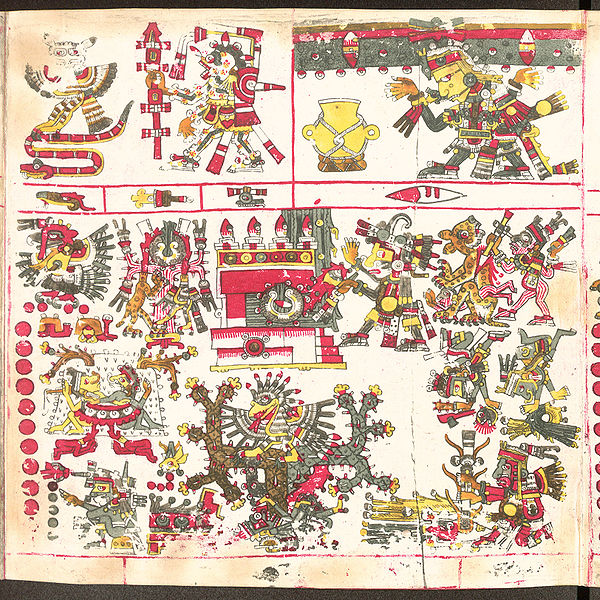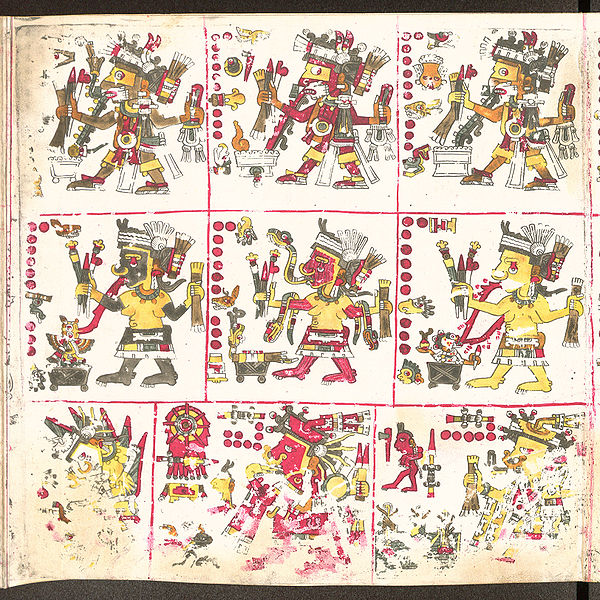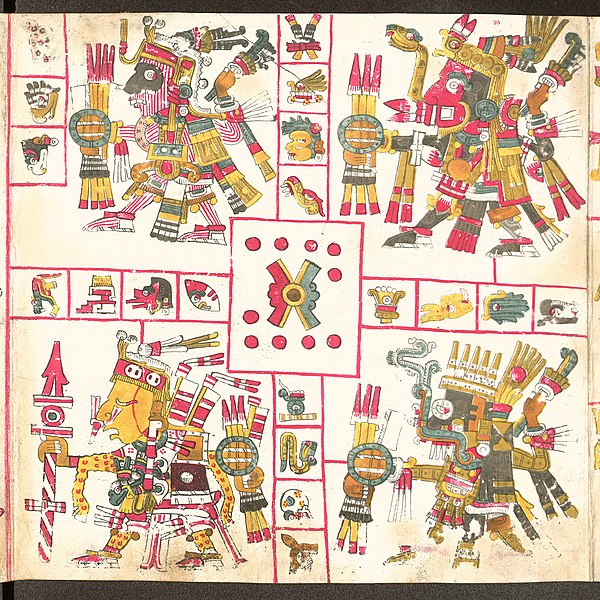In Aztec mythology, a Tzitzimītl is a type of celestial deities associated with stars. They were depicted as skeletal female figures wearing skirts often with skull and crossbones designs. In post-conquest descriptions they are often described as "demons" or "devils", but this does not necessarily reflect their function in the prehispanic belief system of the Aztecs.
Depiction of a Tzitzimitl from the Codex Magliabechiano.
Depiction of Itzpapalotl, Queen of the Tzitzimimeh, from the Codex Borgia.
Aztec mythology is the body or collection of myths of the Aztec civilization of Central Mexico. The Aztecs were Nahuatl-speaking groups living in central Mexico and much of their mythology is similar to that of other Mesoamerican cultures. According to legend, the various groups who were to become the Aztecs arrived from the north into the Anahuac valley around Lake Texcoco. The location of this valley and lake of destination is clear – it is the heart of modern Mexico City – but little can be known with certainty about the origin of the Aztec. There are different accounts of their origin. In the myth the ancestors of the Mexica/Aztec came from a place in the north called Aztlan, the last of seven nahuatlacas to make the journey southward, hence their name "Azteca." Other accounts cite their origin in Chicomoztoc, "the place of the seven caves", or at Tamoanchan.

Mictlantecuhtli (left), god of death, the lord of the Underworld and Quetzalcoatl (right), god of wisdom, life, knowledge, morning star, patron of the winds and light, the lord of the West. Together they symbolize life and death.
Huitzilopochtli is raising up the skies of the South, one of the four directions of the world, surrounded by their respective trees, temples, patterns, and divination symbols.
Embodied spirits; Tonalleque (1), Cihuateteo (2).
Patterns of War; (1a) Tlaloc, (1b) Xiuhtecuhtli, (2a) Mixcoatl, (2b) Xipe-Totec.






